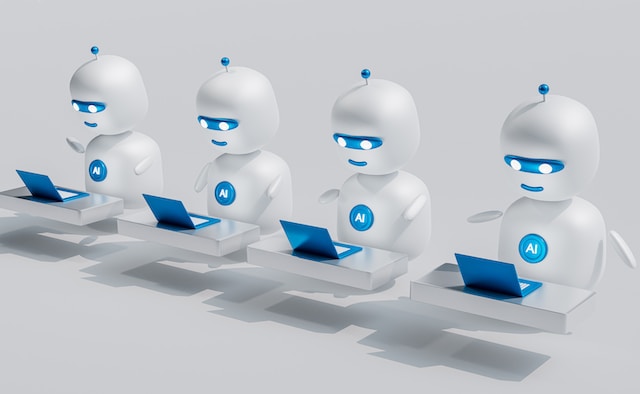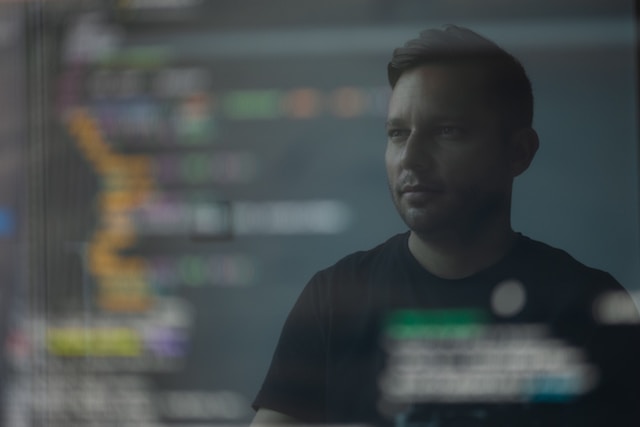
As we delve deeper into the realm of artificial intelligence technology and digital innovation, the field of machine learning artificial intelligence has emerged as a prominent area of research and development. Machine learning is the process of teaching machines to learn and make decisions based on data and algorithms, without explicit human intervention. Within its realm, there are several types of machine learning content that developers and researchers utilize to improve the performance of a machine learning system.
Supervised Learning
Supervised learning is one of the most fundamental types of machine learningcontent in machine learning. It involves training machines to learn from labeled data, where each data point is associated with a known outcome or target value. By using this labeled data, machines can make predictions or take actions based on the patterns and relationships they learned during the training phase.
How Does Supervised Learning Work?
In supervised learning, the training data consists of input features and their corresponding output labels. The goal of the machine learning algorithm is to find a function that maps the input features to the correct output labels. This function, also known as the model, can then be used to predict the output labels for new, unseen data.
Training Phase
During the training phase of supervised learning, the machine learning algorithm is exposed to the labeled data. It analyzes the patterns present in the input features and their associated output labels to understand the relationship between them. The algorithm then adjusts its internal parameters to minimize the difference between the predicted output labels and the actual output labels, thus improving its accuracy over time.
Evaluation and Application
Once the supervised learning algorithm is trained, its performance needs to be evaluated. This evaluation involves testing the model’s accuracy on a separate set of data, called the test set, that was not used in the training phase. The accuracy of the model is assessed by comparing its predicted output labels with the actual output labels. This evaluation helps determine the reliability and generalization capabilities of the trained model.
Supervised learning has a wide range of applications in various fields, including natural language processing, computer vision, and fraud detection. It enables machines to learn from past data and make informed decisions or predictions about future data. By harnessing the power of labeled data, supervised learning empowers machines to assist humans in solving complex problems and driving innovation in countless domains.
Unsupervised Learning

In the world of machine learning, unsupervised learning stands as a fascinating approach that delves into the mysteries of unlabeled data. Contrary to supervised learning, where machines learn from labeled data, unsupervised learning explores uncharted territories by uncovering patterns, relationships, and structures within the data itself. It is like a treasure hunt where machines are not given explicit instructions but are encouraged to discover the hidden gems on their own.
Clustering
One of the main techniques in unsupervised types of machine learning is clustering, a process that groups together data points based on their similarities or differences. The idea is to identify clusters or clusters that share common traits, allowing machines to understand the underlying structure of the data. This technique has a wide range of applications, such as customer segmentation, image recognition, and anomaly detection.
Dimensionality Reduction
Another powerful aspect of unsupervised learning is dimensionality reduction, which aims to simplify complex data by identifying the most crucial features and eliminating redundant or irrelevant ones. By reducing the dimensionality of the data, machines can efficiently process and analyze information, leading to improved performance and efficiency. This technique finds its application in various domains, including data visualization, recommendation systems, and feature engineering.
Anomaly Detection
Unsupervised learning also plays a significant role in identifying anomalies or outliers within datasets. By learning the normal behavior of the data, machines can detect unusual patterns or data points that deviate from the norm. This technique is vital for fraud detection, network security, and predictive maintenance, where identifying anomalies can prevent potential threats or failures.
Association Mining
Association mining is a technique within unsupervised learning that aims to discover hidden relationships or associations between different items in a dataset. It involves analyzing transactional data to find patterns and correlations that can lead to valuable insights. This technique is widely used in market basket analysis, customer behavior tracking, and recommendation systems, where understanding associations between products or user preferences can optimize business strategies.
Reinforcement Learning
Another one of the most remarkalable types of machine learning content that mirrors the way humans learn is reinforcement learning. This captivating approach allows machines to learn through trial and error, gradually discovering optimal strategies and actions by receiving rewards for positive outcomes and penalties for negative ones.
Reinforcement learning revolves around the idea of an agent, which can be thought of as a virtual entity or program, interacting with an environment. The agent takes actions in the environment, and based on the consequences of those actions, it receives feedback in the form of rewards or punishments. The goal of the agent is to maximize the cumulative rewards it receives over time by learning the best course of action for different scenarios.
State, Action, and Reward
In reinforcement learning, the environment is typically represented as a set of states, which are the different possible configurations or situations the agent can encounter. Actions, on the other hand, are the choices or decisions the agent can make in a given state.
When the agent takes an action in a particular state, it transitions to a new state, and a reward is provided based on the outcome of that action. The reward serves as a signal to the agent, guiding it towards desirable behavior.

Exploration and Exploitation
As the agent strives to optimize its actions, it faces the challenge of balancing exploration and exploitation. Exploration involves exploring different actions and states to gather information and discover new strategies. Exploitation, on the other hand, entails leveraging the knowledge gained through exploration to maximize rewards in known or familiar situations. Finding the right balance between exploration and exploitation is crucial for achieving optimal performance.
Policy and Value Functions
To make decisions and take actions, the agent relies on two key components: policy and value functions. The policy defines the agent’s behavior by specifying the optimal action to take in each state. It guides the agent’s actions based on the learned knowledge and the desired outcome. Value functions, on the other hand, estimate the long-term value or utility of being in a particular state and taking specific actions. They help the agent assess the potential rewards and shape its decision-making process.
Learning through Trial and Error
The learning process in reinforcement learning involves a trial-and-error approach. The agent interacts with the environment, takes actions, receives rewards, and updates its knowledge based on the outcomes.

Through this iterative process, the agent refines its policy and value functions, continuously improving its decision-making capabilities. Over time, the agent adapts to its environment and learns to navigate complex scenarios more effectively.
Applications of Reinforcement Learning
Reinforcement learning has found numerous applications in diverse fields, showcasing its versatility and power. From robotics and autonomous vehicles to recommendation systems and game-playing agents, reinforcement learning has proven to be an invaluable tool in creating intelligent and adaptable systems.
Transfer Learning
In the ever-evolving world of machine learning, transfer learning has emerged as a game-changing technique that pushes the boundaries of what machines can achieve. With the ability to transfer knowledge gained from one task to another, transfer learning enables machines to leverage existing expertise and adapt it to new and unseen domains. This approach allows for faster and more efficient learning, making it a valuable tool with a wide range of applications.
Transfer learning operates on the principle that knowledge gained from solving one problem can be applied to solve a different but related problem. It enables machines to extract useful patterns, features, and representations from a source domain and apply them to a target domain.
By transferring learned knowledge, machines can overcome the limitations of insufficient data in the target domain, accelerate the learning process, and improve the performance of the model.
Types of Transfer Learning
There are several types of transfer learning techniques that can be applied based on the similarity between the source and target domains. These techniques include:
- Inductive Transfer Learning
Inductive transfer learning is the most common type, where knowledge is transferred from a pre-trained model in the source domain to a new model in the target domain. The pre-trained model acts as a starting point that helps the target model learn from the labeled data specific to the target task. This approach is particularly useful when the target domain has limited labeled data or when training from scratch is time-consuming.
- Transductive Transfer Learning
Transductive transfer learning focuses on leveraging unlabeled data from the target domain to improve the performance of the target model. This technique aims to learn the underlying structure of the target domain by utilizing both labeled and unlabeled data. It can be beneficial when labeled data in the target domain is scarce, but unlabeled data is abundant.
- Unsupervised Transfer Learning
Unsupervised transfer learning is used when no labeled data is available in either the source or target domain. Instead, the focus is on unsupervised learning techniques such as clustering, dimensionality reduction, or generative models to extract relevant features or representations. These learned features can then be utilized for training a target model in the absence of labeled data.
Practical Applications of Transfer Learning
Transfer learning has found applications across various fields, revolutionizing the way machines learn and adapt. Some notable examples include:

Computer Vision: In computer vision, transfer learning has greatly improved the accuracy of image recognition and object detection tasks. By leveraging pre-trained models trained on large-scale datasets like ImageNet, machines can quickly learn to recognize and classify objects in new images with limited labeled data.
Natural Language Processing: Transfer learning has revolutionized natural language processing tasks such as sentiment analysis, text classification, and language translation. Pre-trained language models like BERT (Bidirectional Encoder Representations from Transformers) have been widely used as a starting point for transfer learning in these domains, enabling machines to understand and generate human-like text.
Healthcare: Transfer learning has made significant contributions to healthcare by enabling machines to learn from existing medical data and apply that knowledge to new patients or medical conditions. This has paved the way for personalized medicine, disease diagnosis, and treatment recommendation systems.
Robotics and Autonomous Systems: Transfer learning plays a crucial role in robotics and autonomous systems, where robots need to adapt to new environments and tasks. Pre-trained models and transfer learning techniques allow robots to quickly acquire new skills or adapt existing ones, making them more flexible and adaptable in real-world scenarios.
As machine learning and artificial intelligence continue to grow in importance and influence, it is crucial for developers and researchers to understand the different types of learning content and how they can be applied to various use cases. Whether it’s improving healthcare, enhancing financial systems or optimizing transportation networks, the possibilities for different types of machine learning and AI are endless. With the right learning content and expertise, we can unlock a future where machines work alongside humans to create a more efficient and innovative world.
